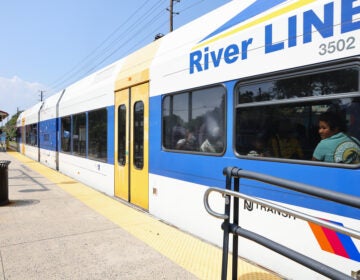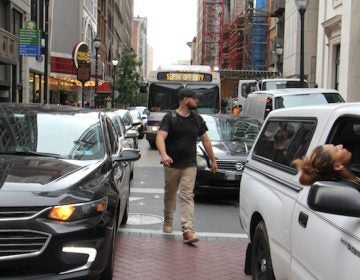New website creates a better sense of place

Oct. 15
By Anthony Campisi
For PlanPhilly
Where in Philadelphia would you have to stand to be walking distance of a farmer’s market, a coffee shop, a library and a Philly CarShare pod? A new website will help you find out.
Walkshed Philadelphia (http://www.walkshed.org/ ) allows users to input any address in the city and see a color map detailing the quality of its walkshed, the one-mile radius around it that’s convenient for hoofing it.
Unlike other Internet applications that measure walkability, the site lets users prioritize the amenities they’d like to measure. Philadelphians can score 19 different categories, ranging from the locations of farmer’s markets and bus stops to tracking quality-of-life issues like instances of violent crime.
To provide that level of specificity, creator Aaron Ogle, a software developer at Avencia Inc. (http://www.avencia.com/ ), spent months dividing the city into 5-by-5 meter squares. He then took data he gathered from the city and private companies on the location of amenities and overlaid them onto the grid, taking into account obstacles to walkability, such as highways and train tracks.
The application was inspired by the Sightline Institute (http://www.sightline.org/ ), an environmental group in Seattle, where Ogle used to live. The group sponsored a blog about car-free living in that city. It inspired Ogle to look into ways of graphically displaying how easy that would be, he explained.
Though Ogle — who developed the site in the 10 percent of his workday Avencia gives employees to work on their own projects — isn’t yet sure how the application can be monetized, he said that “ordinary people could use this as a tool for advocacy” by utilizing the maps Walkshed creates to point out things like a lack of grocery stores or fresh food markets in a neighborhood.
He said that he and his wife might even use Walkshed to decide what neighborhood to move to if they relocate from the suburbs.
After debuting the site at the Conference on Walking and Livable Communities (http://www.walk21.com/conferences/newyork.asp ), which ran from Oct. 7 to Oct. 11, Ogle said he’s gotten a lot of positive feedback, with the most common question from city planners at the conference being “When is it coming to my neighborhood?”
That might not be so simple, however.
Though Clark Williams-Derry, director of programs at the Sightline Institute, called the site “a big step forward,” the detail it provides makes it time-consuming to include larger areas, leaving a place for sites like http://www.Walkscore.com which measures walkability throughout the country but doesn’t take into account pedestrian barriers or allow users to choose the amenities they would like to see near them.
Walkscore provides a single standard that is easy to compare between cities, according Matt Lerner, chief technology officer of Front Seat, the company that developed Walkscore.
Lerner said that this is helping the company push for inclusion of its walkability measure into real estate listings to encourage people to move to more walkable neighborhoods.
He added that Front Seat has received a grant from the Rockefeller Foundation to develop a way for Walkscore to take into account the road grid when coming up with a walkability score.
At the same time, the added functionality of Walkshed provides “a model” for software developers looking to do something similar in other parts of the country, Williams-Derry said.
Contact the reporter at campisi.anthony@gmail.com
WHYY is your source for fact-based, in-depth journalism and information. As a nonprofit organization, we rely on financial support from readers like you. Please give today.





